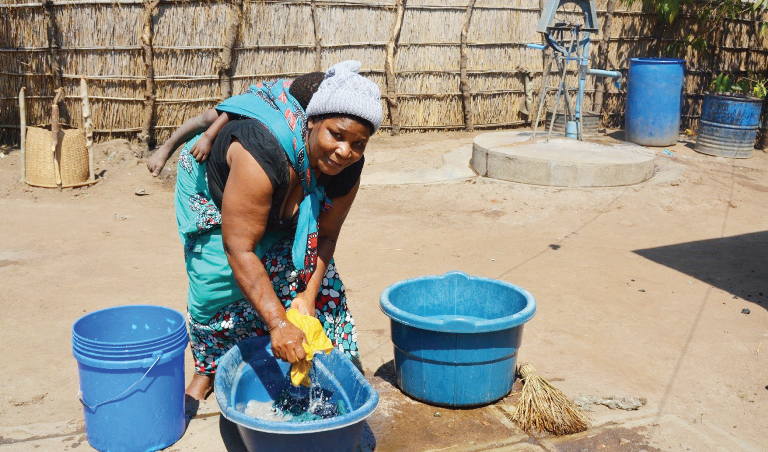Easing life with water pumps
Jane Langa, 33, used to walk about three kilometres to fetch water from a communal pump at a health centre for household use
“Long queues meant a lengthy wait to fill my buckets. Sometimes, my children ended up missing classes to help me fetch water,” she narrates.

To evade the long lines, she sometimes fetch water from murky wells, increasing the risk of catching diarrhoea and waterborne diseases.
“Everytime my child fell sick, I couldn’t travel to South Africa to do my business,” she says.
Langa sells Malawi’s aromatic kilombero rice and dry fish from Lake Malawi in Johannesburg, her main source of income.
To safeguard her health and income, she installed a water pump in her homestead.
The pump bought from Beyond Water has eased her hardships.
“I now fetch water at home and at my own time without jostling with anyone. My neighbours are also benefitting. I now spent more time doing business and my children no longer miss school while fetching water,” she brags.
Jessie Mphepo, from Traditional Authority Kalembo in Mangochi, also had to endure long travels to get safe water. She also owns the “affordable water pump” for her convenience.
“Fetching water was never easy. I had to use contaminated water daily to clean plates, wash clothes and do other household chores because the nearest source of potable water was far away,” she recounts.
Her pump is located where an open well was once choked with dirt and debris. It was tiresome to draw water from the well daily.
Mphepo now waters a variety of vegetables in a new backyard garden that guarantees her family a diversified and nutritious diet daily.
She grows tomatoes, mustard, rape and other crops which fetch K30 000 to K45 000 a month, according to her.
The Malawi Demographic Health Survey of 2015 shows that 87 percent of households use an improved source of drinking water.
However, the findings indicate that 15 percent of rural households do not use water from an improved source.
The nationwide survey indicates that more than 75 percent of the rural majority have no water in their households and they rely on tube wells or boreholes as the main sources of safe water. However, people in about 47 percent of the households travel at least 30 minutes to get drinking water.
To avoid waterborne diseases, the survey reports that a total of 26 percent of households in Malawi are using an appropriate treatment method with 20 percent in urban and 27 percent in rural areas.
Just like the two women, Thomas Chikweza from Nkwinda Village in T/A Njombwa, Kasungu District says irrigating crop fields surrounding their homes has become easier when he got the pump.
“I no longer use a watering can, which was exhausting and couldn’t cover a big garden,” he says.
From watering cans, Chikweza upgraded to a treadle pump which was more tiresome, according to the farmer.
In 2019, he bought the Easy Pump from Beyond Water and had it installed in his demonstration plot along the M1.
“I now grow crops all year round. The pump is easy to use and I do not get tired when watering the crops,” he states.
Beyond Water country director Elias Chimulambe says the pump is suitable and affordable for smallholder farmers, especially the rural majority.
Chimulambe says: “When it comes to irrigation, it improves crop productivity by 100 to 300 percent.
“So far, it has helped improve the livelihood and food security of people in rural and peri-urban communities. Users now harvest two or three times a year, with winter cropping.”
He says the spare parts are locally available and the pump is easy to sustain or repair.
Beyond Water targets about 1 500 000 people accessing potable water and 50 000 farmers venturing into sustainable irrigation by the end of the current growing season in 2022.
Minister of Agriculture Lobin Lowe backs the rollout of the affordable irrigation technologies for smallholder farmers.
The National Irrigation Master Plan (2015-2035) recognises the importance of irrigation in the development of Malawi.
According to the blueprint, Malawians utilise only 104 000 hectares out of a potential 408 000 hectares that exists.





